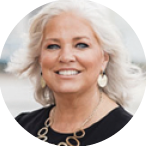


A staff shortage is a significant challenge facing ophthalmology practices. It is therefore important to take steps to fortify your practice. This article outlines several strategies for maintaining a successful practice despite the challenges of a staff shortage.
BE CREATIVE AND FLEXIBLE
The standard hiring approach of posting a job opening online and reviewing and selecting the best candidate is insufficient in today’s job climate. Following are three tips for applying a creative, flexible, and unique approach to recruiting new hires.
No. 1: Employ innovative recruiting methods. Consider asking staff or other physicians if they know anyone who would be a good fit for the practice. Community institutions such as churches, synagogues, and schools can also be great places to find employees.
No. 2: Embrace new employment models. Consider adopting creative employment models such as job sharing, flexible scheduling, and working remotely. Success with a remote workforce requires strong policies and procedures. Evaluate whether certain tasks could be outsourced to remote positions and set clear standards and expectations to ensure productivity and quality are not compromised.
Many practices now use remote triage teams and virtual consultations to provide initial education and collect patient information. Virtual consultations can optimize efficiency and save time and foot traffic in the practice. It also helps prepare patients for their first appointment.
No. 3: Hire people people. Working with people is intrinsic to health care, but there is increasing demand for remote work among ophthalmic staff. There are clear benefits to remote work—and being flexible with employees is essential in the current job climate—but it is crucial to prioritize the skills and characteristics most important to your practice when searching for new hires.
Culture is one key to attracting and retaining quality staff. Make sure your employees love their jobs. Try to attract staff who thrive on the human-emotional aspects of the job. The best employees are empathetic and love helping others; they find joy when patients are happy after surgery. If you hire the right people, a positive workplace culture will follow.
FOCUS INTERNALLY
Invest in your staff by supporting their continuing medical education efforts and offering additional job training (for more on technician training, see “Where Have All the Good Technicians Gone?,” pg 38). Well-trained employees tend to be more engaged with and excited about their work, which feeds back into the practice and helps to lessen the impact of staff shortages of any kind (for perspectives on preparing your practice for the predicted shortage of ophthalmologists, see “Say Anything,” pg 34). Consider initiating a formal process for training during work hours.
We also recommend cross-training employees on various job functions. This avoids being dependent on one employee to complete certain tasks, a pitfall that can backfire if the individual is sick or leaves the practice.
Software Solutions to Optimize Practice Efficiency
Software solutions can mitigate the impact of a staff shortage on your practice. Following is a nonexhaustive list of practice management platforms, some of which the authors have direct experience with (click here for links to the website of each software solution).
Brevium. A practice management system that, by leveraging practice data, performs data-driven patient engagement such as appointment reminders and patient recall communications.
CoFi. A payment platform that creates automated invoices and facilitates compliant comanagement payments.
Conclusn. A data analysis platform that uses Power BI (Microsoft) to pull data from various practice management software systems to create custom interactive data dashboards for key metrics.
ClearWave. A patient engagement platform that has functions for patient scheduling, check-in, insurance eligibility, and other patient communications.
Dialpad. A communication platform that allows voice, video, and text-based online appointments. It features voice and meeting analytics to help with the billing and payer reimbursement process and can be used on a variety of devices.
MaximEyes. A cloud electronic medical record (EMR), practice management, patient engagement, online bill-pay, and optical point-of-sale system.
MDBackline. A platform to streamline cataract patient education. Patients receive a text or email message with a link to educational materials. They also respond to questions about their lifestyle and vision during the educational process through this platform.
Practice Navigator. A program to facilitate precalls for patients ahead of a cataract surgery evaluation, aiding with patient education and obtaining information about their lifestyle and vision. A virtual technician enters the information directly into the practice’s EMR system.
Next Patient. A software platform that integrates with EMR technology through online appointment scheduling, digital check-ins, advanced reminders and texting, and reputation management.
OptiCall. A call center that provides services such as monthly reports on calls, patient recalls and follow-ups on web-based leads, and automated reputation management.
Phone COA. A precall platform executed by certified technicians to obtain and preload patients’ medical information and relevant notes into EMRs.
Phreesia. An automated platform to complete patient intake and other engagements, such as appointment scheduling and reminders, automated insurance verification, and payment.
Promptly. A web-based patient experience software platform for patient communication and appointment scheduling. Patients can also pay their balance before arriving for their appointment.
SolutionReach. A software program for patient appointment reminders and communications. The software also features patient satisfaction tools such as surveys and online reviews as well as patient education and automated practice marketing tools.
Salesforce customer relations management. A system used to track patients throughout the course of their treatment journey, schedule appointments, send reminders, and perform other clerical tasks.
EMBRACE NEW TECHNOLOGY
New technologies and software solutions can optimize practice efficiency without compromising the patient (or staff) experience. Keep abreast of the software solutions available and encourage your staff to do the same. It’s important to test new solutions before investing in them to avoid adopting something that might decrease productivity. Testing can be done by visiting the exhibit hall booths of various software companies at meetings or scheduling virtual demonstrations.
Be sure to allocate finances not only for the acquisition of new software solutions but also for their integration into the practice workflow. Careful assessment of the tools and functions of any new software is required to avoid duplicating the functions of an already integrated platform (see the accompanying sidebar on the previous page for a nonexhaustive list of helpful practice management software solutions). Appoint a lead who is in charge of successfully implementing technologies into the practice and training staff on how to use them.
CONCLUSION
Break away from traditional recruiting and employment models, listen to your employees, and embrace technologies that lessen the workload in the practice. With a little bit of creativity and adaptability, you can set your practice up for success despite the challenges of the current job climate.




